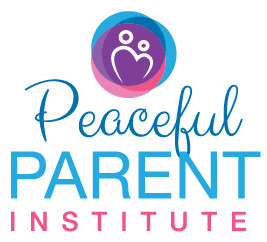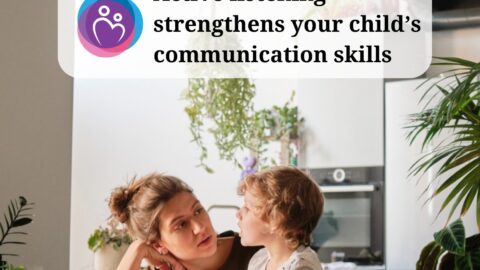 The calmer a parent is in their communication with their child, the easier it is for children to hear, understand and assimilate the information. We want our children to cooperate with us because it feels good to them to do so. People of all ages enjoy the mutual love and appreciation that accompanies cooperation and teamwork, especially when they feel their contributions are valued.
The calmer a parent is in their communication with their child, the easier it is for children to hear, understand and assimilate the information. We want our children to cooperate with us because it feels good to them to do so. People of all ages enjoy the mutual love and appreciation that accompanies cooperation and teamwork, especially when they feel their contributions are valued.
Using “I” statements can be very effective when expressing our feelings relating to requests, limits and giving children feedback. Using “I” statements is a way of sharing our feelings and perspective that’s as non-blaming, non-critical and non-shaming as possible.
When limits and requests are expressed with genuine care for the child, the child feels more invited and involved than controlled and coerced. If they need more information or support before they cooperate, the child will feel freer to seek what they need in order to do what needs to be done.
Although calm communication works best, parents can’t help having an annoyed or frustrated reaction to their child at times, that’s just normal. Parents are not only human, but mostly very stretched and stressed humans; parents often feel exhausted, lacking in support and often feel very under-appreciated! It’s understandable that parents can feel very stressed as they juggle all the needs in the family. As long as parents overall stay in their role as mature caring adults, which includes repairing the connection and resolving misunderstandings after there’s been conflict, our children not only can cope with us having emotional responses to challenges in the family, but they can learn a lot from these interactions, especially when parents can adopt some of the following tips.
Less “you” statements leads to less stress
In the absence of learning a different or better way of communicating, parents can rely too heavily on “You” statements like;
“you must ..”, “you shouldn’t ..”, “why do you always …”, “why must you …”, “now you need to …. “, “you upset me when …. “, “you make me angry when you … “, “you better fix this now “, “you need to do your homework”, “you should make your bed”, “that’s not how you should do it”, “you need to learn to be more responsible”, “don’t you dare ..”, “don’t you even think about it”
Too many “you” statements can all feel so critical, blaming and can add up to being pretty overwhelming for children of any age. In fact, the same is true for adults. Giving your child too many such “you” commands, requests and corrections puts you as the parent in the sergeant major role and can make it really hard, if not impossible, for your child to hold a sense of your humanness. Too many “you” statements make it very difficult for your child to care about your feelings, to consider your needs and to respect your perspective. One of the challenges of parenting is to be a leader who is strong, confident, caring and fair while maintaining trust, open communication and connection.
The advantages of using “I” Statements.
“I” statements, on the other hand, are a way of communicating your requests, boundaries and limits to your child clearly, authentically and assertively but non-aggressively. The parent shows their feelings and provides great role modelling of how to express feelings without attacking, demanding, threatening or punishing. An example of an “I” statement is “when you speak to me like that, I feel sad/frustrated” as opposed to a blaming “you” statement of “you’re being so disrespectful, don’t speak to me like that”. Or “I feel annoyed because we had agreed that you would keep the music down when I was on the phone, but you turned it up and I couldn’t hear”, as opposed to “how can I trust you to stick to an agreement. That was really inconsiderate of you to turn the music up”.
“I” statements (for children and adults alike) are less likely to provoke a defensive reaction in the child;
- because the child feels less blamed,
- because the communication is more mature and level and excludes labels or harsh accusations,
- because it gives the child insight into the parent’s humanness,
- because it overall invites a more open communication than “you” statements.
Thomas Gordon, in his book Parent Effectiveness Training, created helpful guidelines for expressing “I” statements (in no particular order):
- Express what you see or the actual event that happened
- Express what you feel about what you see or what happened
- Express why you feel that
- Give reassurance of trusting and caring for your child (if relevant)
- Give child opportunity to change their behaviour or enter dialogue based on this information
- Express what you expect of your child, but only if they don’t figure it out themselves first.
Some examples are:
“I get nervous (what you feel) when I see you waving your toy close to the baby (what you see) because the baby could get hurt (why you feel it) and I know you wouldn’t like that to happen” (reassurance of trust). Clearly, if the baby is in danger, you’ll need to also physically ensure the baby’s safety, while giving your child the opportunity to modify their behaviour based on you sharing your observation.
“Because your play is so loud (information), even though it’s great that you’re having fun (reassurance of caring for their wants), I’m worried (your feeling) that the baby will wake up and be upset.” (reason for feeling)
“When I see you running inside (information), I get worried (what you feel) that you might break something or fall and hurt yourself.” (reassurance of care)
“I see that you’re enjoying your play and that it’s 6.30, I’m worried about you getting your homework finished. Would you like to talk through what homework you have on?”
“I hear you want me to play. I’m feeling torn (your feeling) because I wish I could play with you (reassurance of wanting connection), but I need to make the dinner and can’t do both.”
“I feel sad when I give you food and you say “yuck” ” … If no response “what’s a different way that you could let me know you don’t like the carrots?”
“It worries me when I see you put crayons in your mouth, they’re only for drawing and could make you feel sick.” … If no response, “you can draw with the crayons but can’t put them in your mouth.”
“I get a shock and feel very frustrated when you drive into my leg on your trike” (what has happened and how you feel about it – the lack of specific correction opens the space for your child to volunteer a show of care and to bring forward a solution).
“I’m frustrated that you took your juice into the sitting room and spilled it on the carpet because I’m concerned it might leave a stain, you must be disappointed as well, are you? ….. hmm what needs to happen now?”
When setting a limit, children benefit from receiving a message that’s clear, that leaves little confusion about what you feel and what you expect like in the above examples.
Just to note that each child at each age and stage and each situation is unique and requires for the parent to attune to what’s needed in the moment. These examples are just guidelines to help you consider what might work best in your situations with your child.
When parents start to practice using more “I” statements,
they’ll often be pleased and relieved to hear their child using similar words with others who they’re unhappy with. Instead of “you’re being mean, I don’t want to be your friend”, they might say “when you call me silly, I feel really sad”. What great modelling of identifying how they feel, naming their feelings, listening to the other’s perspective and expressing what they want, need or expect from the other person.
When the focus is on maintaining the connection even when expressing limits ….
parents are more inclined to be aware of the feelings that they are bringing to the situation, hence more likely to focus on returning to a calmer more patient state, more likely to take a couple of deep breaths and self-regulate. If calming down takes longer, you can express; “ok I’m disappointed about this and I just need to take a minute (or a few minutes if the situation allows) to calm down, we can sort it out soon”. Creating a bit of space rather than insisting the problem be sorted immediately is often a kinder approach to yourself as the parent as well as your child. If you’re feeling negative towards your child, it’s again best to focus on self-regulation, self-empathy, validating your own feelings and perhaps promise yourself to organize some listening time soon and then come back to speaking to your child maturely with non-blaming or threatening “I” statements.
Natural consequences.
The child experiencing the natural consequence of their father/ mother’s emotional response, while also gaining support and reassurance from their parent for their own feelings or good intentions, learns about other people’s boundaries in a way that’s more natural and non-threatening As opposed to when parents enforce a consequence (i.e. a punishment) which really just trains children to avoid getting in trouble and doesn’t give them the help they need to work through their feelings or the necessary communication to make their way back to peace with the person who became annoyed or upset. When children are given feedback about their parent’s feelings in a way that’s non-threatening and emotionally supported to own the problem, they are given clues to other people’s real feelings in other similar situations and equipped with skills to bring about repair – at least sometimes. Avoiding blaming or shaming a child makes it much more possible for them to hear and receive the feedback of your response.
Avoid forcing your child, except in situations of danger or risk.
If your child’s not interested in cooperating, they’re very likely to change their mind if you manage to make it fun! If they still don’t want to, avoid using force or coercion and don’t worry that they’ll never take responsibility unless you insist they do the right thing every single time. Parents often feel justified in becoming very forceful with their child if they refuse to comply, but it’s essential for a child’s sense of autonomy to know that they will still be loved and accepted even when they don’t comply. This room for lack of cooperation at times actually creates much more space in the long run for more willing cooperation and teamwork from your child. Remember that you’re fostering integrity and self-discipline rather than empty obedience. What’s more important than your child helping you every time right when you ask is that they don’t gather stressful feelings that they’ll carry in their body relating to taking responsibility in future situations. Children are often more ready and able to take responsibility after their upset has subsided.
If your child is upset, prioritize listening to their feelings.
The parent setting a loving limit or expressing a boundary is often a catalyst for the child to feel, show, express and resolve any backlog of built up stress. When adults enforce external consequences;”ok you’ve spilled the juice, now you have to clean it up whether you like it or not and if not you’ll only be allowed water until you’ve learned your lesson”, children generally experience it as a punishment rather than an opportunity to resolve and repair the situation willingly, a battle of wills ensues and you can expect more and more conflict and less cooperation as a result.
In summary.
Expressing our real feelings of frustration or disappointment to our children needs to be done sensitively using “I” statements rather than “you” statements as they are highly attuned to our feelings and a little bit of feedback from a parent like “ouch that hurts when you pinch me, I don’t like that” can have a very strong effect on a child. So it’s good if the parent can stay in their mature adult self (as opposed to the hurt child self that parents often operate from when strong emotions surface) and immediately show care for how the child received the boundary. Balancing tense moments with a bit of humour can also be a great way to relieve tensions and give reassurances of love, connection and support – “but you *are* allowed to give me a big hug” and give them a big silly dramatic hug! ….
If you need support in your journey of adopting peaceful parenting strategies in your family, contact Genevieve about some one on one parent coaching or holistic counselling or both combined (see services tab).
You might also like to read the article:
Helping your child develop great problem solving skills
Can you maintain healthy boundaries? Are you modelling healthy boundaries?
Child’s Feelings and Needs Chart (pdf printable version as well)










Hello Genevieve,
Have read many of your posts on Facebook since joining a few weeks ago. Thank you very much for all of them – they are motivational in the truest sense. Am going to subscribe and also download your mp3 ‘stress relief for parents’. Love that I hear here all of the best from N.V.C. P.E.T. Attachment Parenting and Transactional Analysis in an integrated and effective whole. I greatly appreciate your sensitive, insightful, articulate and powerful voice.
Sincerely,
Monica
I’m so glad that you’ve been finding the information helpful Monica! Yes NVC and PET are really fantastic resources, and it was probably through reading Thomas Gordon many years ago that I was first introduced to I statements.
I have a hard time being assertive with my own parents…I am pretty sure this article pertains to parents being assertive to their kids, but what about it being the other way around? When does a person need to be assertive with their parents? is my question.
Hi Crystal,
I think many people find it hard to be assertive, particularly with authority figures. I think the use of I Statements is an effective way of communicating with all people, including our parents.
🙂 Tabitha
Great counsel. How do you set limits to behaviour when the child is too young to understand why? Like playing with electrical sockets, opening drawers in granddad’s house? Grabbing a mobile phone and jumping up and down on it. Playing with granddads landline…..things like that.
[…] of reassurance. When a parent owns their stress and learns to express it non-aggressively using I Statements, this provides great modelling for children and you'll likely soon start to hear your child owning […]
[…] your feelings with the use of non-blaming I Statements is helpful and often necessary feedback for a child when their actions are inappropriate, but […]
[…] the family matter. This gives children the skills to listen to the perspectives of others. We use I statements, facilitate conflict resolution, hold family meetings and avoid […]